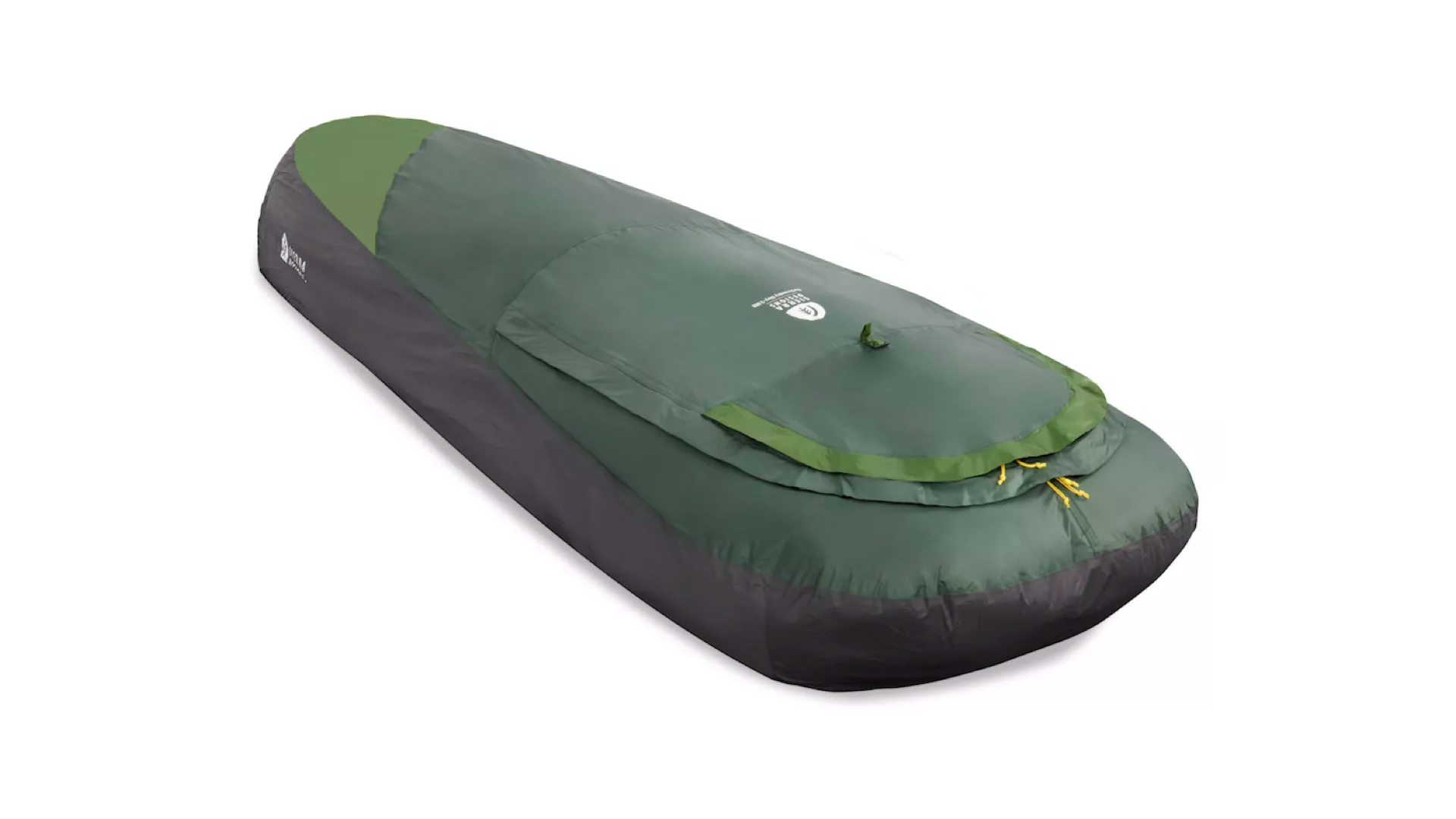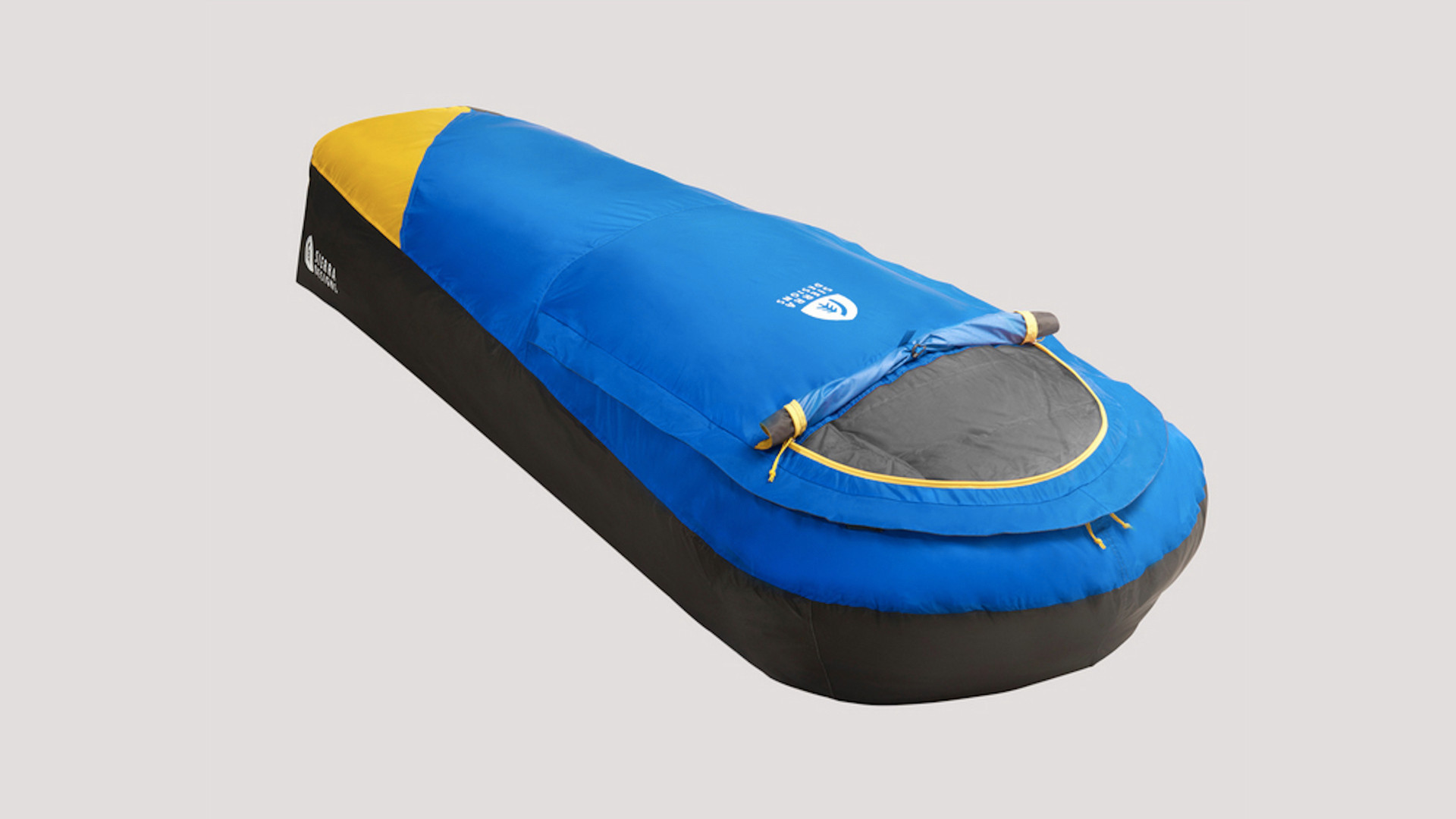Advnture Verdict
A sack with solid American thru-hiker credentials, good design and quality materials combine in the Backcountry bivy sack, which is well featured for extended trips.
Pros
- +
Lightweight
- +
Roomy enough for a winter-weight sleeping bag to loft
- +
Comfort enhancing features
Cons
- -
Light fabrics require care in use
You can trust Advnture
Sierra Designs Backcountry Bivy: first impressions
The Sierra Designs Backcountry Bivy is instantly recognizable as an item that’s been designed for use on multi-day hikes, with clever features that add comfort and practicality to the ultralight minimalism of the throw-it-down-climb-in sleep ethos of the more classic bivies in our best bivy sacks buying guide.
• RRP: $159.95 (regular), $189.95 (long) (US) / £128.95 (regular), £139.95 (long) (UK)
• Weight: 370g / 13oz
• Length: 203cm / 80in
• Width (shoulder & foot): 91cm & 79cm / 36in & 31in
• Materials: Top 20D nylon ripstop, bottom 30D nylon ripstop
• Mouth Closure: Long-access zip and short ventilation panel zip
• Features: Integral mosquito net, head and foot suspension loops, separate stuff pouch
• Colors: Green, Gray & Yellow (Europe) / Blue, Gray & Yellow (US)
The high-spec fabrics and zips keep the Backcountry lightweight, but it is still packed with well-thought-through features. There are two zips, one allowing easy access and the other – with a sewn-in mosquito net – acting as a face vent.
Clever use of panels gives the sack the kind of 3D volume that allows plenty of room for a mat and a sleeping bag, though the standard Backcountry’s length (it also comes in a longer size) doesn’t allow much extra space in the hood for storage.
Suspension loops at the foot and shoulder allow the sack’s upper skin to be strung up to overhead branches giving air space inside the skin, which is good for reducing condensation.
And just in case you Google this item and wonder why some search results come up with a green variation with a “3000” added to the name, the Sierra Designs Backcountry Bivy 3000 is the European version of the same item – only the colors have name have changed.
Sierra Designs Backcountry Bivy: in the field

During the first night on test, I opted to use my sleeping pad under the Backcountry Bivy – rather than inside – to provide a layer of protection to the bottom skin. A sleeping pad will fit inside, and though the dimensions are snug, a panel at the foot end gives good lofting room.
The two zipped openings are constructed to a clever design. The larger one gives easy access, for when you’re getting into a sleeping bag inside the bivy sack, and it can be left open – with the top third of the upper panel folded down – on warm, dry nights. The smaller opening at face level has a sewn-in mosquito net and a zip panel that can be rolled up for ventilation or dropped down depending on weather.
All the latest inspiration, tips and guides to help you plan your next Advnture!
Small features that add no weight but increase functionality are the two tie-loops at foot and shoulder; use a thin cord from a branch or similar to raise the skin and add a bit of pitch and more ventilation space in the interior.
The packing pouch is generous and so easy to use, but it’s a separate piece; I tied mine onto the sack so as not to lose it.
After a wild childhood in west Cork, Jasper Winn began embarking on long cycles, walks, horse journeys and kayak trips across five continents – adventures he’s decanted into books, magazine articles, radio and television documentaries. Keen on low-tech but good gear, Jasper is an advocate of slow adventures by paddle, pedal, saddle, boot and sail. He has circumnavigated Ireland by kayak and cycled across the Sahara. Twice. Having ridden north-to-south across Algeria he discovered the only way to get back was to turn round and pedal north again.


